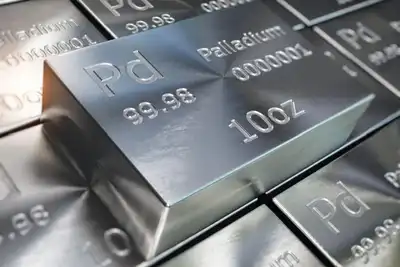Various precious metals, including platinum, often get compared to gold, which is considered the gold standard in many ways. Gold’s popularity for investment purposes is unrivaled among precious metals, boasting a huge market size compared to others like platinum. The substantial size of the gold market has several advantages, making it easier to enter and exit positions, with tighter spreads that lower trading costs.
While platinum’s market may not be as massive as gold’s, it still offers sufficient liquidity for individual traders. The difference in market size matters more to large institutional traders and governments dealing with massive quantities of assets like gold or platinum. For individual investors, the primary distinction between gold and platinum lies in the sheer popularity of gold, leading to more interest and investment in it.
When making investment decisions, it is essential to strip away any hype and objectively compare the pros and cons of different assets. This enables investors to make informed choices based on a clear understanding of the assets they are considering.
Responsiveness of Platinum and Gold
While it might seem that the higher volume of trading in gold would lead to larger price movements during periods of accumulation or distribution, it’s important to consider these moves relative to the size of their respective markets. In reality, platinum, with its smaller market and lesser involvement from large institutions like governments, tends to exhibit more pronounced price swings in response to market sentiment.

A significant portion of the platinum supply is used for non-investment purposes, whereas a larger percentage of gold is dedicated to investment. This difference might imply that platinum prices would be more stable due to the consistent demand and supply for industrial purposes. However, in practice, investor sentiment has a substantial impact on platinum’s price movements.
During periods of market uncertainty, sentiments of fear or panic can lead to mass selling of platinum, causing rapid price declines. The 2008 financial crisis serves as an example, where platinum lost almost two-thirds of its value in a few months, while gold experienced a much milder decline.
This showcases platinum’s higher volatility compared to gold. Although both precious metals are subject to price swings, platinum’s market tends to be more responsive to the actions of larger investors, resulting in more significant relative impacts on its price.
Investors often perceive platinum as more speculative, leading them to be more prone to quick buying or selling, which contributes to its heightened price volatility compared to gold.
Platinum, Gold, and Risk Management
Managing risk is crucial in any investment, and it becomes even more critical when dealing with precious metals like platinum, which tend to be more volatile than gold. Platinum’s price fluctuations can be swift and significant, leading to potential losses if not managed properly.
Unfortunately, risk management is often overlooked in precious metal investing. Many people mistakenly believe that gold and platinum are inherently safe investments and can act as a hedge against risks. While they can serve as hedges under appropriate asset management and allocation, this requires diligent and proactive risk management, which is often lacking among investors.
Like with stocks, some investors only become concerned about risk after suffering significant losses. For instance, during a period when platinum’s price dropped from over $2000 to below $800 in just five months, some investors may have panicked and sold at a substantial loss. Those who held on may have seen the price rebound to around $1800 over the next few years, while those who sold near the bottom might have regretted their decision.
To practice proper risk management, it’s essential to have a well-thought-out plan that aims to prevent excessive risk exposure from the start. This means setting clear exit thresholds to protect against large declines and re-entering positions once conditions are safer. Objective standards and predefined rules should guide the decision-making process, rather than relying on emotional responses to market movements.
In the case of precious metals, where risks can be higher, investors should be even more diligent in managing their positions with a structured approach to minimize potential losses and achieve better long-term results. A thoughtful and disciplined approach to investing in gold or platinum is essential to navigate the inherent risks effectively.
Assessing the Individual Markets of Platinum and Gold
The decision to invest in platinum, gold, or any other asset should be based on the current desirability and potential return of the asset. Both platinum and gold have the potential to offer good returns, but timing is crucial to take advantage of market changes while minimizing risk.
Generally, the gold market tends to exhibit more orderly trends, making it somewhat easier to predict. However, the predictability of both metals depends on specific circumstances, and there are times when platinum may demonstrate more orderliness and potentially offer higher returns over a specific period.
For longer-term investments, gold may be the preferred choice, as its trends tend to unfold over longer time frames without experiencing wide pullbacks as frequently as platinum does.
Assessing the past price performance is not enough when considering long-term precious metal investments, especially with platinum’s volatile price movements. Proper market timing is essential in precious metal investing, and it becomes even more crucial with platinum. Both gold and platinum require active management and a strategic approach to capitalize on market opportunities effectively.
Investors may consider holding positions in both platinum and gold, adjusting the allocation based on the behavior of each market. However, the benefits of diversification are minimal in this context. The primary objective is to capitalize on profitable opportunities when market conditions are favorable and abstain when the likelihood of profitable outcomes is lower.
Although platinum and gold have some distinctions, they share many similarities, and both can be successfully speculated upon with the right skills and approach. Proper market analysis, timing, and risk management are crucial for investors looking to profit from either precious metal.




